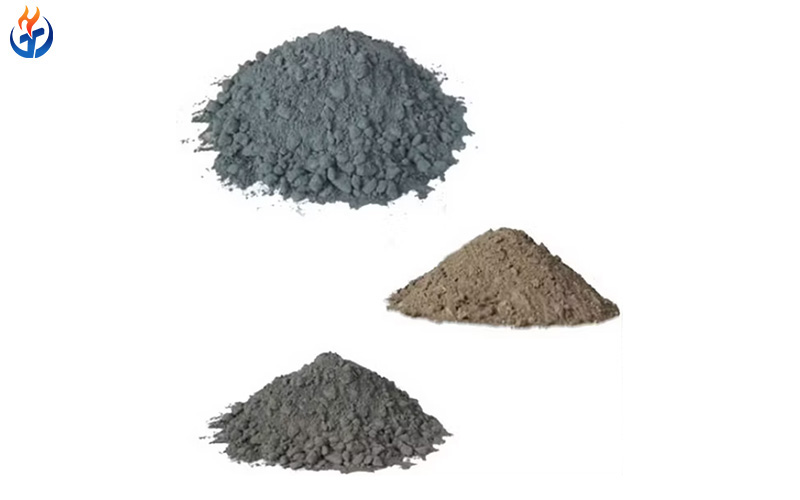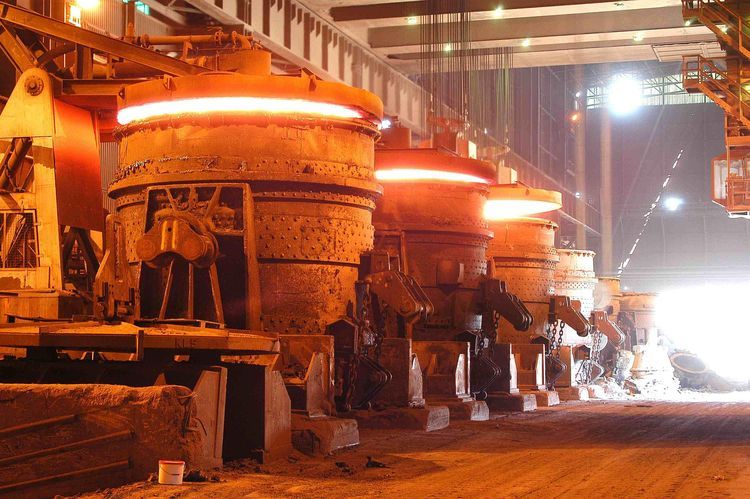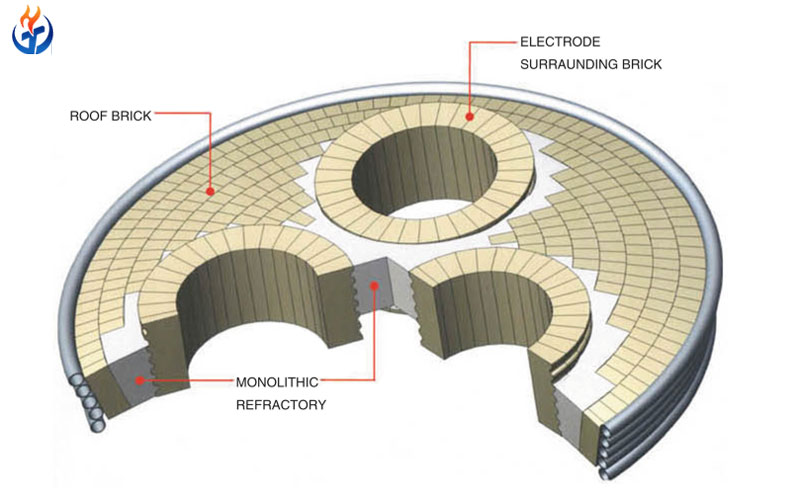Power generation is a demanding industrial process that requires consistent, high-temperature performance from every component involved. At the heart of thermal power plants, boilers operate under extreme conditions—high temperatures, high pressures, and corrosive environments. Protecting the internal surfaces of these boilers from heat, chemical attack, and mechanical wear is crucial for ensuring reliability, efficiency, and safety. This is where Monolithic Refractories come into play.
Monolithic refractories are a class of heat-resistant materials that do not require pre-shaped bricks. Instead, they are installed in-situ as a dense or insulating lining through casting, gunning, ramming, or spraying methods. Over the past decades, monolithic refractories have become the standard material for power plant boiler maintenance and lining, replacing traditional refractory bricks due to their superior performance, ease of installation, and ability to form joint-free linings.
This article will explore the applications, types, advantages, and performance characteristics of Monolithic Refractories in power plant boilers, helping plant operators and engineers understand why these materials are essential for modern boiler systems.

Understanding Monolithic Refractories
Monolithic Refractories refer to unshaped refractory materials that can be applied directly to structures to form a seamless lining. They are supplied as dry or semi-wet mixes and then installed and hardened at the site. Unlike refractory bricks, which require cutting and careful fitting, monolithic refractories adapt to any surface geometry, making them highly versatile for complex boiler designs.
1.1 Composition and Structure
Monolithic refractories typically consist of:
Refractory aggregates such as alumina, silica, magnesia, or bauxite.
Binders like calcium aluminate cement or phosphate-based systems.
Additives to enhance flowability, thermal shock resistance, or setting time.
Once installed, these materials undergo curing and firing, forming a dense, heat-resistant structure capable of withstanding prolonged exposure to extreme boiler conditions.
1.2 Forms of Monolithic Refractories
Depending on installation and bonding methods, monolithic refractories can be categorized as:
Castables – mixed with water and poured into molds or forms (commonly used as boiler castables).
Plastic refractories – applied by ramming into place, suitable for irregular shapes.
Gunning mixes – pneumatically applied using specialized equipment.
Ramming mixes – compacted by mechanical or manual ramming.
Coatings and mortars – used for surface protection or brick joining.
In monolithic refractory power plant applications, castables are by far the most common due to their balance of strength, installation speed, and adaptability.
Role of Monolithic Refractories in Power Plant Boilers
Boilers in thermal power plants are exposed to various aggressive environments—flue gases, slag, ash, and continuous thermal cycling. Without a reliable refractory lining, metal components would degrade rapidly, leading to efficiency losses and costly shutdowns.
Monolithic refractories play a crucial role in protecting the boiler’s high-temperature zones. Key applications include:
2.1 Furnace Walls and Combustion Chambers
The inner walls of the furnace must resist direct flame and high radiant heat. Monolithic refractories with high alumina or silicon carbide content are used here to ensure minimal heat loss and excellent mechanical strength.
2.2 Burner Blocks and Nozzles
These regions face direct flame impingement and mechanical wear from fuel injection. Dense monolithic refractories or castables with high hot strength and erosion resistance are used to extend service life.
2.3 Boiler Roofs and Ceilings
The upper regions of the furnace experience frequent temperature fluctuations. Insulating monolithic refractories are applied here to maintain stable operation and prevent heat loss.
2.4 Ash Hoppers and Slag Zones
Ash and slag can cause chemical corrosion and erosion at high temperatures. Monolithic refractories with anti-slag additives and high thermal shock resistance are used to resist such conditions.
2.5 Ducts, Cyclones, and Air Heaters
Flue gas passages require abrasion-resistant and thermally stable linings. Lightweight insulating castables are also used to enhance energy efficiency by reducing heat transfer.
Advantages of Using Monolithic Refractories in Boilers
The shift from brick refractories to Monolithic Refractories in power plants has been driven by several key advantages:
3.1 Seamless Linings
Monolithic materials form joint-free structures, minimizing the risk of gas leakage and reducing hot spots caused by mortar joints.
3.2 Fast Installation and Maintenance
Unlike brickwork, monolithic refractory installations are faster and require less manual labor. This significantly reduces boiler downtime during maintenance or relining.
3.3 Excellent Thermal Shock Resistance
Thermal cycling is common in boiler operation. Monolithic refractories can absorb and distribute thermal stress more evenly, reducing cracking and spalling.
3.4 High Erosion and Corrosion Resistance
Properly formulated boiler castables resist attack from slag, ash, alkalis, and other corrosive materials present in combustion gases.
3.5 Customization and On-site Repair
Because they can be mixed and applied directly, monolithic refractories allow localized repairs and customized thickness adjustments, extending the service life of the lining.
3.6 Improved Energy Efficiency
By minimizing heat loss and maintaining consistent furnace temperatures, monolithic refractory linings help optimize fuel efficiency and overall thermal performance.
Types of Boiler Castables Used in Power Plants
Boiler castables are the most widely used monolithic refractory material in power generation. Depending on the operating environment and design of the boiler, the following types are commonly applied:
Conventional Castables (Low to Medium Cement)
Suitable for general purpose areas such as air ducts and external furnace walls.
Offer moderate strength and good insulation properties.
High-Alumina Castables
Ideal for areas exposed to temperatures above 1500°C.
Provide excellent mechanical strength and chemical resistance.
Low Cement and Ultra-Low Cement Castables
Exhibit high density, low porosity, and superior hot strength.
Commonly used in burner zones and slag lines.
Insulating Castables
Used for heat conservation in walls, roofs, and other low-stress areas.
Reduce heat loss and improve energy efficiency.
Phosphate-Bonded Castables
Excellent for rapid repairs and high-abrasion zones.
Can be installed without full curing, minimizing downtime.
Each castable type is selected based on factors such as service temperature, mechanical stress, slag chemistry, and installation method.
Installation and Maintenance Practices
For maximum performance, monolithic refractory power plant installations must follow strict preparation and curing procedures.
5.1 Surface Preparation
Before application, metal shells and old linings should be cleaned of dust, oil, and corrosion. Anchors must be correctly positioned to support the new refractory layer.
5.2 Mixing and Application
Boiler castables are mixed with the prescribed water ratio for optimal flowability.
The mix is poured or gunned into position and compacted to remove air voids.
Proper vibration ensures density and uniform thickness.
5.3 Curing and Drying
Curing involves keeping the installed refractory moist for a specific period, followed by controlled drying to remove residual moisture. Improper drying can lead to steam spalling during initial heating.
5.4 Inspection and Maintenance
Regular inspections for cracks, erosion, and surface wear allow early detection and repair. With monolithic refractories, small damaged sections can be easily patched, reducing the need for full relining.
Conclusion
The efficiency and longevity of a power plant boiler depend significantly on the quality and performance of its refractory lining. Monolithic Refractories have become indispensable in modern power plants due to their seamless structure, superior thermal properties, and ease of maintenance. Whether applied as boiler castables, gunning mixes, or insulating linings, these materials offer unmatched protection against heat, erosion, and chemical attack.
By choosing the right formulation and maintaining proper installation practices, power plant operators can achieve extended boiler life, reduced downtime, and enhanced energy efficiency. In today’s competitive power industry, Monolithic Refractories stand as a critical component of reliable, cost-effective, and sustainable boiler operation. Looking for monolithic refractories and other refractory materials? Welcome to Get more from Xintai refractory!



